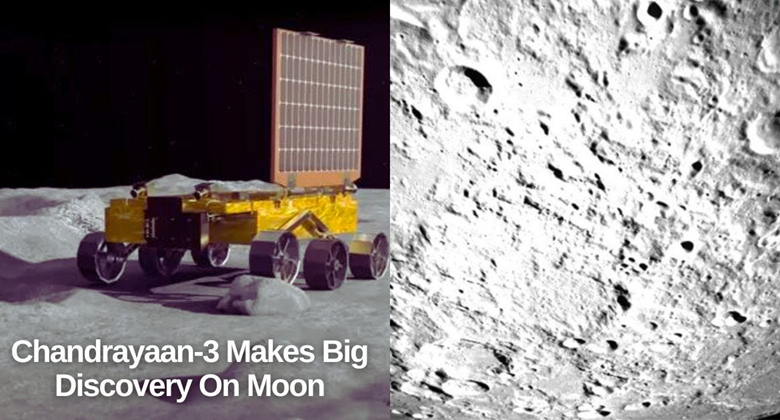Chandrayaan-3’s Groundbreaking Discovery Validates Moon’s Formation Theory

News Mania Desk/Agnibeena Ghosh/22nd August 2024
India’s Chandrayaan-3 mission has made a remarkable contribution to lunar science by confirming a key theory about the Moon’s origin and evolution. Launched by the Indian Space Research Organization (ISRO) on July 14, Chandrayaan-3 made history on August 23 as the first spacecraft to land near the Moon’s South Pole. This achievement has provided new evidence supporting the hypothesis that the Moon originated from a vast ocean of magma that cooled and solidified over time.
The breakthrough findings, reported by scientists from Ahmedabad’s Physical Research Laboratory (PRL) and published in the prestigious journal Nature, reveal significant insights into the Moon’s early history. According to Professor Santosh Vadawale, the lead author of the study, the data gathered from this mission supports the long-standing hypothesis that the Moon was once a molten body covered by a massive magma ocean. Although earlier missions had hinted at this theory through remote-sensing data and rock samples, the exact extent and presence of this magma ocean remained uncertain.
Prior research into lunar geology primarily relied on samples collected by missions such as Apollo, Luna, and Chang’e, which explored areas from the Moon’s equator to mid-latitudes. None of these missions, however, investigated the relatively untouched and pristine South Pole region. Chandrayaan-3’s successful landing at this location has allowed scientists to make the first in-situ measurements of lunar soil, or regolith, from the South Pole’s highlands.
The analysis has shown a uniform elemental composition in the lunar soil, consistent with samples collected from other lunar regions by past missions. This uniformity strengthens the Lunar Magma Ocean (LMO) hypothesis, which proposes that the Moon formed from a molten state. According to this theory, the less dense ferroan anorthosite rocks floated to the Moon’s surface, forming the highlands, while denser minerals sank to create the mantle.
The implications of these findings are profound. They not only enhance our understanding of the Moon’s formation but also inform future lunar exploration missions. As nations gear up for new missions, including NASA’s Artemis program and ISRO’s planned mission by 2027, this data provides a crucial foundation for understanding lunar geology and preparing for potential lunar bases.
The Chandrayaan-3 mission utilized the Alpha Particle X-ray Spectrometer (APXS) on its Pragyan rover to collect this valuable data. As the rover traveled 103 meters from its landing site, the APXS instrument conducted 23 scientific observations, analyzing the lunar soil’s elemental composition. These measurements offer detailed clues about the Moon’s early geological history and contribute significantly to the ongoing exploration of Earth’s nearest celestial neighbor.
In summary, Chandrayaan-3’s successful mission and its groundbreaking discoveries affirm the theory of the Moon’s early magma ocean and provide essential data for future lunar exploration. The insights gained from this mission will play a critical role in shaping our understanding of lunar formation and evolution, paving the way for future missions and potential lunar habitation.






